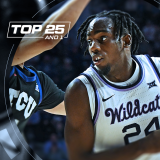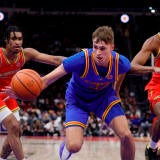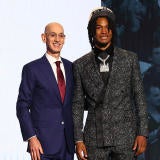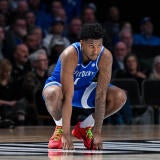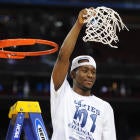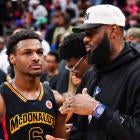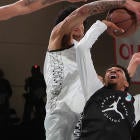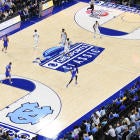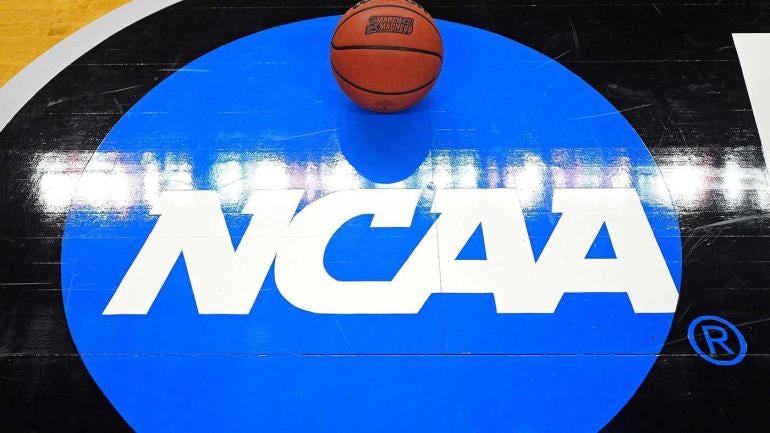
The NCAA Men's Basketball Rules Committee on Thursday approved several rule changes including a modification to the legal guarding position on block/charge scenarios involving defenders around the basket which will go into effect for the 2023-24 season. Under the new rule, a defender to draw a change must be in position at the time an offensive player plants a foot to go airborne to attempt a field goal. If the defender arrives after the offensive player plants a foot to launch towards the hoop, officials will be coached to call a block if or when contact occurs.
The rule change also states that a secondary defender would have to be outside the restricted area arc to legally draw a charge. Under the previous rules structure, defenders had to be in position to draw a charge before the offensive player went airborne.
The NCAA's Men's Basketball Rules Committee announced the changes Thursday after receiving feedback from membership that too many charges were being called throughout the season related to these types of block/charge plays. The goal in making the change will be to reduce the number of charges called and also to give officials more time to officiate the plays, the NCAA said.
"Our goal is to try to reduce the number of charges that are called," said Rick Barnes, Tennessee's coach and the committee chair, earlier this year when the rule change was initially proposed. "We want to give more time to the offensive player to adjust to defensive player movement and reduce the hard collisions that are taking place."
The NCAA also ratified a number of other rule changes after voting on them this week that will allow players for the first time to wear any number between 0 and 99, which was approved by the Playing Rules Oversight Panel. For decades the NCAA has restricted two-digit jersey numbers beginning with 6, 7, 8 and 9.
Other rule changes ratified to go into effect for 2023-24 are as follows:
- An optional rule will allow for preloaded/live video to be transmitted to the bench area. This has been an experimental rule for the past two years.
- Officials will be able to review goaltending/basket interference calls during the next media timeout to ensure the calls were accurate, as long as the official calls it on the floor. If there is a foul on the shooter while the ball is in the air with a goaltend/basket interference, the review would be immediate to properly adjudicate the potential free throws.
- Bench personnel who are not students will be allowed to serve as peacekeepers when an altercation occurs.
- Under two minutes, when a coach requests an out-of-bounds play be reviewed, that team will be charged a timeout if the original call is not overturned.
- Anytime the ball hits the rim and the offense retains possession in the front court, the shot clock will reset to 20 seconds.
- If a player is called for a foul and instant replay officials see that the foul is a direct result of a flagrant 1 or flagrant 2 foul against the player who was originally assessed a foul, officials will be allowed to remove the foul on the player who was flagrantly fouled.
- A timeout will be able to be granted when a player has possession of the ball even though the player is airborne. (An example would be a player grabbing a loose ball and calling timeout before landing out of bounds.)
- If a player commits three flagrant 1 fouls in a game, the player will be disqualified from the game.
- Players will be allowed to wear numbers 0-99.
- Schools will no longer have to submit a waiver for players to wear religious headwear, provided it is safe for competition.
- Red and amber lights will be allowed on the backboard.
Additionally, the NCAA also voted to put into effect two experimental rule changes to take place for the 2023-24 season -- one of which is a previously-approved experimental rule and the other being an NIT-only change. The NIT rule, which will widen the lane to 16 feet, will now go to the NIT Board for approval.
- To continue the experimental rule with the standard media timeout format in the second half (first dead ball under 17 minutes, 14, 11, eight and four) for any interested conference, as well as in the National Invitation Tournament.
- In the NIT, widening the lane to 16 feet.




